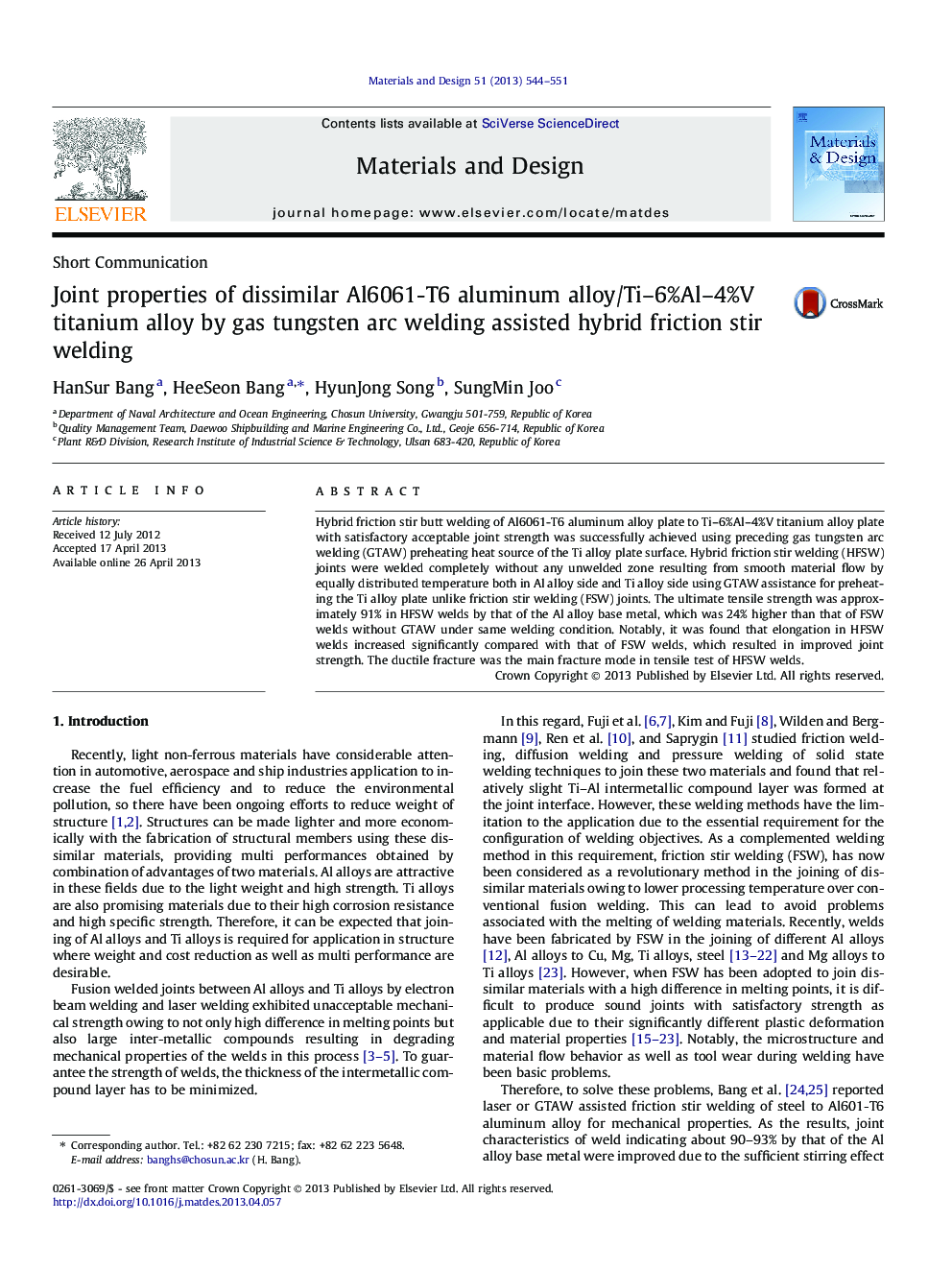| Article ID | Journal | Published Year | Pages | File Type |
|---|---|---|---|---|
| 829872 | Materials & Design (1980-2015) | 2013 | 8 Pages |
•Hybrid friction stir welding for Al alloy and Ti alloy joint has been carried out.•Mechanical strength of dissimilar joint by HFSW and FSW has been compared.•Microstructure of dissimilar joint by HFSW and FSW has been compared.
Hybrid friction stir butt welding of Al6061-T6 aluminum alloy plate to Ti–6%Al–4%V titanium alloy plate with satisfactory acceptable joint strength was successfully achieved using preceding gas tungsten arc welding (GTAW) preheating heat source of the Ti alloy plate surface. Hybrid friction stir welding (HFSW) joints were welded completely without any unwelded zone resulting from smooth material flow by equally distributed temperature both in Al alloy side and Ti alloy side using GTAW assistance for preheating the Ti alloy plate unlike friction stir welding (FSW) joints. The ultimate tensile strength was approximately 91% in HFSW welds by that of the Al alloy base metal, which was 24% higher than that of FSW welds without GTAW under same welding condition. Notably, it was found that elongation in HFSW welds increased significantly compared with that of FSW welds, which resulted in improved joint strength. The ductile fracture was the main fracture mode in tensile test of HFSW welds.
